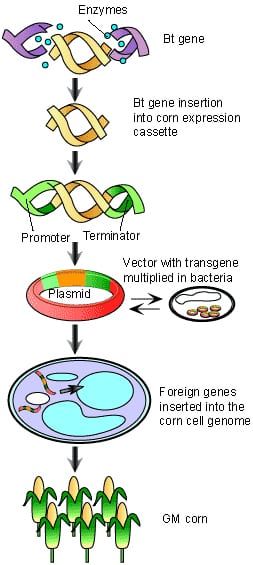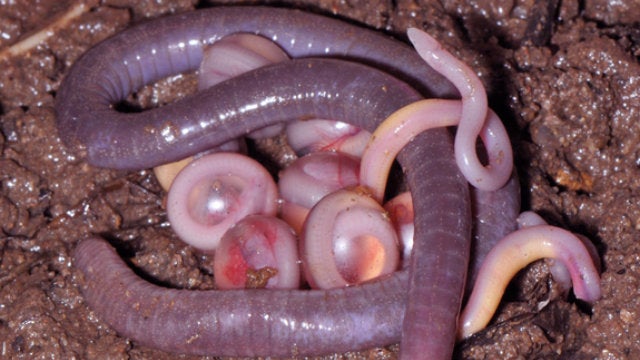Results showed that the Bt spore-crystals genetically modified to express individually Cry1Aa, Cry1Ab, Cry1Ac or Cry2A can cause some hematological risks to vertebrates,increasing their toxic effects with long-term exposure. Taking into account the increased risk of human and animal exposures to significant levels of these toxins, especially through diet, our results suggest that further studies are required to clarify the mechanism involved in the hematotoxicity found in mice, and to establish the toxicological risks to non-target organisms, especially mammals, before concluding that these microbiological control agents are safe for mammals.
Did you get that? Their conclusion is that it is premature to consider GM toxins to be safe in mammals. Billions have already been exposed to Bt toxins, in combination with glyphosate-based herbicide formulations such as Roundup, and yet, most biotech research scientists and industry regulators still claim they are unequivocally safe. This has much to do with the well-known relationship that biotech corporations like Monsanto have with so-called 'check book' science firms who are basically paid to obfuscate adverse health outcomes of their products, such as the GMO-Cancer link. [see: Monsanto-Funded Science Denies Emerging Roundup Cancer Link]
Consider also that the question of combined toxicity of Cry toxins and glyphosate-based residues within plants have not been sufficiently explored, and that glyphosate exposure has already been linked to non-Hodgkins lymphoma and hairy cell leukemia in the biomedical literature.[ii]
The reality is that we no longer have time to wait around for additional research to accumulate on the adverse health effects of GMOs, especially considering the biotech industry has far more capital to infuse into their own faux research on the topic.
Some, in fact, argue that we should not be waiting around for the corrupt legislative process to compel manufacturers to label GMOs, rather, we should be fighting to ban them altogether, advocating for the precautionary principle before it is too late to undo the damage to our biosphere.
The study also found:
1) That Cry toxins are capable of exerting their adverse effects when suspended in distilled water, not requiring alkalinization via insect physiology to become activated as formerly believed.
2) That a dose of Cry1Ab as low as 27 mg/kg, their lowest tested dose, was capable of inducing hypochromic anemia in mice – the very toxin has been detected in blood of non-pregnant women, pregnant women and their fetuses in Canada, supposedly exposed through diet.
3) Whereas past reports have found that Bt toxins are generally nontoxic and do not bioaccumulate in fatty tissue or persist in the environment, the new study demonstrated that all Cry toxins tested had a more pronounced effect from 72 hours of exposure onwards, indicating the opposite is true.
4) That high-dose Cry toxin doses caused blood changes indicative of bone marrow damage (damage to "hematopoietic stem cell or bone marrow stroma").
The authors noted their results "demonstrate leukemogenic activity for other spore-crystals not yet reported in the literature."


“The fact that the genetic code can simultaneously write two kinds of information means that many DNA changes that appear to alter protein sequences may actually cause disease by disrupting gene control programs or even both mechanisms simultaneously.”
So much for their claims of "safe and precise" DNA changes to our food.
http://www.washington.edu/news/2013/12/12/scientists-discover-double-meaning-in-genetic-code/
There are two aspects to this question. One is the length of Gene VI accidentally introduced by developers. This appears to vary but most of the 54 approved transgenes contain the same 528 base pairs of the CaMV 35S promoter sequence. This corresponds to approximately the final third of Gene VI. Deleted fragments of Gene VI are active when expressed in plant cells and functions of Gene VI are believed to reside in this final third. Therefore, there is clear potential for unintended effects if this fragment is expressed (e.g. De Tapia et al. 1993; Ryabova et al. 2002; Kobayashi and Hohn 2003).
The second aspect of this question is what quantity of Gene VI could be produced in GMO crops? Once again, this can ultimately only be resolved by direct quantitative experiments. Nevertheless, we can theorize that the amount of Gene VI produced will be specific to each independent insertion event. This is because significant Gene VI expression probably would require specific sequences (such as the presence of a gene promoter and an ATG [a protein start codon]) to precede it and so is likely to be heavily dependent on variables such as the details of the inserted transgenic DNA and where in the plant genome the transgene inserted.
Commercial transgenic crop varieties can also contain superfluous copies of the transgene, including those that are incomplete or rearranged (Wilson et al 2006). These could be important additional sources of Gene VI protein. The decision of regulators to allow such multiple and complex insertion events was always highly questionable, but the realization that the CaMV 35S promoter contains Gene VI sequences provides yet another reason to believe that complex insertion events increase the likelihood of a biosafety problem.
Even direct quantitative measurements of Gene VI protein in individual crop authorizations would not fully resolve the scientific questions, however. No-one knows, for example, what quantity, location or timing of protein production would be of significance for risk assessment, and so answers necessary to perform science-based risk assessment are unlikely to emerge soon.
Big Lessons for Biotechnology
It is perhaps the most basic assumption in all of risk assessment that the developer of a new product provides regulators with accurate information about what is being assessed. Perhaps the next most basic assumption is that regulators independently verify this information. We now know, however, that for over twenty years neither of those simple expectations have been met. Major public universities, biotech multinationals, and government regulators everywhere, seemingly did not appreciate the relatively simple possibility that the DNA constructs they were responsible for encoded a viral gene.
It is perhaps the most basic assumption in all of risk assessment that the developer of a new product provides regulators with accurate information about what is being assessed. Perhaps the next most basic assumption is that regulators independently verify this information. We now know, however, that for over twenty years neither of those simple expectations have been met. Major public universities, biotech multinationals, and government regulators everywhere, seemingly did not appreciate the relatively simple possibility that the DNA constructs they were responsible for encoded a viral gene.
This lapse occurred despite the fact that Gene VI was not truly hidden; the relevant information on the existence of Gene VI has been freely available in the scientific literature since well before the first biotech approval (Franck et al 1980). We ourselves have offered specific warnings that viral sequences could contain unsuspected genes (Latham and Wilson 2008). The inability of risk assessment processes to incorporate longstanding and repeated scientific findings is every bit as worrysome as the failure to intellectually anticipate the possibility of overlapping genes when manipulating viral sequences.
This sense of a generic failure is reinforced by the fact that this is not an isolated event. There exist other examples of commercially approved viral sequences having overlapping genes that were never subjected to risk assessment. These include numerous commercial GMOs containing promoter regions of the closely related virus figwort mosaic virus (FMV) which were not considered by Podevin and du Jardin. Inspection of commercial sequence data shows that the commonly used FMV promoter overlaps its own Gene VI (Richins et al 1987). A third example is the virus-resistant potato NewLeaf Plus (RBMT-22-82). This transgene contains approximately 90% of the P0 gene of potato leaf roll virus. The known function of this gene, whose existence was discovered only after US approval, is to inhibit the anti-pathogen defenses of its host (Pfeffer et al 2002). Fortunately, this potato variety was never actively marketed.
A further key point relates to the biotech industry and their campaign to secure public approval and a permissive regulatory environment. This has led them to repeatedly claim, firstly, that GMO technology is precise and predictable; and secondly, that their own competence and self-interest would prevent them from ever bringing potentially harmful products to the market; and thirdly, to assert that only well studied and fully understood transgenes are commercialized. It is hard to imagine a finding more damaging to these claims than the revelations surrounding Gene VI.
Biotechnology, it is often forgotten, is not just a technology. It is an experiment in the proposition that human institutions can perform adequate risk assessments on novel living organisms. Rather than treat that question as primarily a daunting scientific one, we should for now consider that the primary obstacle will be overcoming the much more mundane trap of human complacency and incompetence. We are not there yet, and therefore this incident will serve to reinforce the demands for GMO labeling in places where it is absent.
What Regulators Should Do Now









